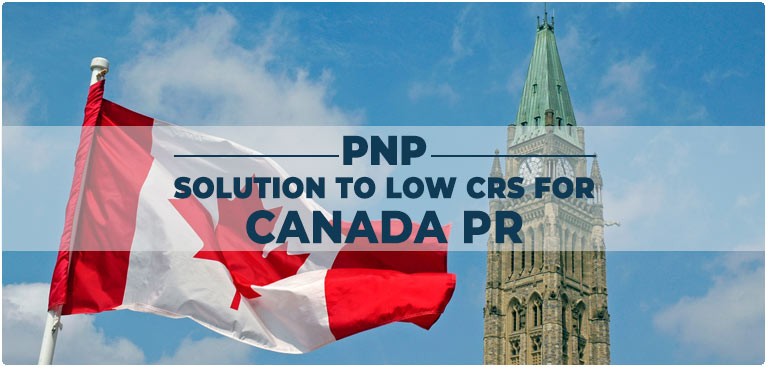
List of Changes to the Temporary Foreign Worker Program in 2024-2025
The TFWP or Temporary Foreign Worker Program is one of the most popular ways for employers in Canada can hire foreign workers temporarily. The primary goal of TFWP is to address labour shortages. Canadian employers can hire a suitable foreign national to fill an in-demand job when permanent residents or Canadian citizens are not available for that position. The Canadian government has introduced a series of significant changes to TFWP, shifting its focus from temporary foreign workers to the domestic labour force. The changes impact employers and foreign workers all over the world. This blog compiles the changes made to the program throughout 2024-2025, uncovering how Canada navigates its evolving labour market needs.
What is the TFWP or Temporary Foreign Worker Program?
Before we discuss the changes, let’s understand what TFWP is exactly. This is especially helpful for the new skilled workers planning a career in Canada.
TFWP is a Canadian government initiative that allows employers in Canada to hire an eligible foreign worker temporarily. The purpose of this program is to fill labour market gaps when Canadian citizens and permanent residents in the country are not available.
How can employers in Canada apply to TFWP?
The employer needs to get a positive Labour Market Impact Assessment (LMIA) from Employment and Social Development Canada (ESDC) to be eligible for TFWP. The LMIA is the key cornerstone of the TFWP.
What is LMIA?
An LMIA is a document that confirms:
● No Canadian workers fit the job requirements.
● There is an urgent need for a foreign worker to fill the job.
● Hiring foreign workers will not have a negative impact on the Canadian labour market.
Employers need to get a positive LMIA to be able to hire a foreign worker. They must prove their efforts to hire Canadians first.
Once the employer gets a positive LMIA, the foreign worker needs to apply to IRCC for a work permit. iRCC then assesses the foreign worker’s eligibility and admissibility to Canada.
What are the Changes Made to TFWP in 2024-2025?
In 2024, the government introduced updates to the TFWP for employers who want to hire foreign workers. These include:
New Target of TFWP Workers Admission
Canada aims for about 82,000 new temporary foreign workers in 2025 through the Temporary Foreign Worker Program. This new target is part of a broader strategy outlined in the 2025-2027 Immigration Levels Plan. The purpose of setting new targets is to align the admission of temporary workers with Canada’s labour market needs and infrastructure capacity.
Reduced LMIA Validity
From May 1, 2024, the validity of a positive LMIA has been cut from 12 months to six. This means employers have far less time to move through their hiring process. The new timeline pushes organizations to act faster and plan more efficiently when seeking foreign talent, leaving little room for delays.
Lower Cap on Low-Wage Workers
The rules have tightened significantly on hiring low-wage temporary foreign workers. Starting May 1, 2024, the cap dropped from 30% to 20%, and by September 26, it went further down to 10%. Still, essential industries such as healthcare, construction, and food processing are offered some breathing room through limited exemptions.
Increased Wage Requirements
Wage rules have shifted to favour higher compensation. Since January 1, 2024, all employers must pay the prevailing wage for each role and location. Then, on November 8, the bar was raised even higher and now high-wage roles must be offered at least 20% above the regional median wage, adding pressure on employers to stay competitive.
Stricter Processing in High-Unemployment Areas
As of September 26, 2024, LMIA applications for low-wage roles in areas with unemployment above 6% will no longer be processed. This measure ensures that available jobs in struggling regions prioritize local workers first. For employers, it narrows options significantly, especially in industries dependent on lower-wage labour.
Limitations on Spousal Open Work Permits
New restrictions mean spousal open work permits are no longer guaranteed. Their availability is now tied directly to the primary applicant’s occupation and skill level. This change reduces the flexibility families once had and could discourage some skilled workers from pursuing opportunities in Canada if their partners face uncertainty.
How Can You Adapt and Make The Best Use of TFWP Changes?
Most of the recent changes to TFWP focus on restricting the program and prioritizing the domestic labour force. So it is more important than ever that you understand these shifts and stay informed to position yourself effectively for opportunities in Canada.
Here are some popular ways to make use of the changes to TFWP:
For Newcomers Seeking to Come to Canada on a Work Permit
Focus on in-demand, high-wage sectors– The most significant restrictions have been applied to the low-wage stream. Your chances of success will be much higher if you have skills and experience in high-demand fields where employers are more likely to get a positive LMIA. These include healthcare, construction trades, technology and STEM and food processing.
Seek employers with a history of hiring foreign workers- Look for companies that have previously used the TFWP. They will be more familiar with the process and better equipped to navigate the stricter requirements.
Enhance your qualifications- Ensure your qualifications, work experience, and language skills (English or French) are well-documented and meet the requirements for high-wage positions.
For Temporary Foreign Workers Already in Canada
Be proactive about your status- You shouldn’t wait until the last minute to discuss your permit extension or PR application process with your employer.
Explore pathways to permanent residency (PR)– The Canadian government is steering temporary residents toward permanent residency, particularly those with in-demand skills. Skilled workers should focus on Express Entry by boosting their CRS score through better language results, added work experience, or further education. Additionally, Provincial Nominee Programs (PNPs) remain a strong option, as provinces actively nominate candidates who fit their unique labour market needs.
Gain experience in exempt sectors – If you are in a low-wage position that is not in a priority sector, consider gaining experience or certifications in fields like healthcare or construction, which are exempt from some of the stricter new rules.
For Visitors Who Hoped to Find Work in Canada
Finding a job in Canada as a visitor is no longer an option, as this pathway has officially closed. Instead, applicants must apply for jobs and work permits from their home country. That said, a visitor visa can still be valuable for exploring opportunities, such as networking, attending job fairs, and connecting with employers, before beginning the formal application process abroad.
Final Thoughts,
It can be challenging for newcomers to navigate Canada’s immigration landscape due to the frequent changes made to the programs. The process can seem complex and time-sensitive. While some applicants can confidently handle the process on their own, it may be wise to seek guidance from a licensed immigration professional at Onkar Immigration when dealing with detailed applications, improving your PR strategy, or interpreting new rules. Expert advice can save you time, reduce errors, and increase your chances of success.
Categories
Quick Contact
Get in touch
If You need any helps, Please feel free to Contact Us
3655-99 street NW, Edmonton, Alberta. T6E 6K5






